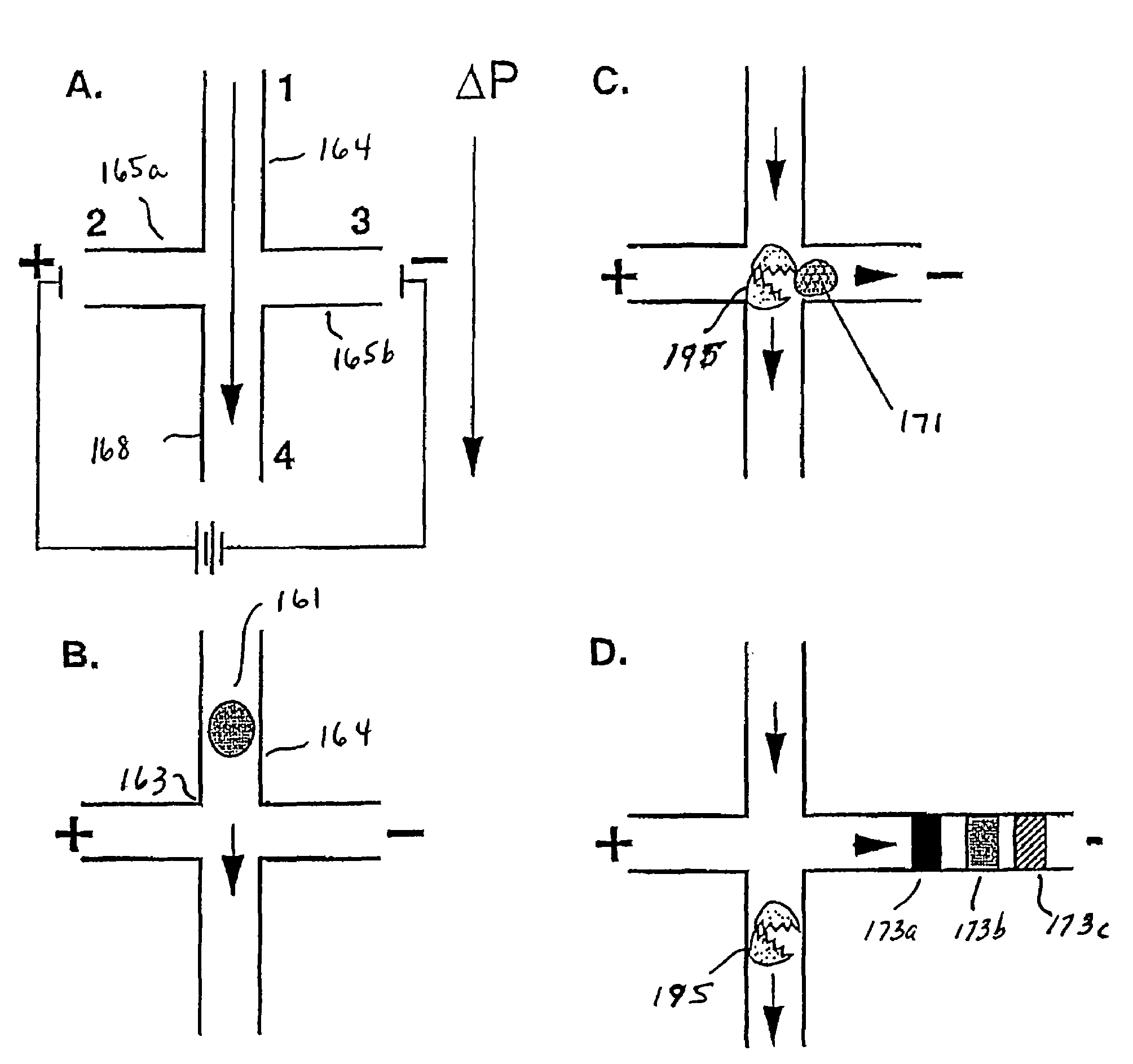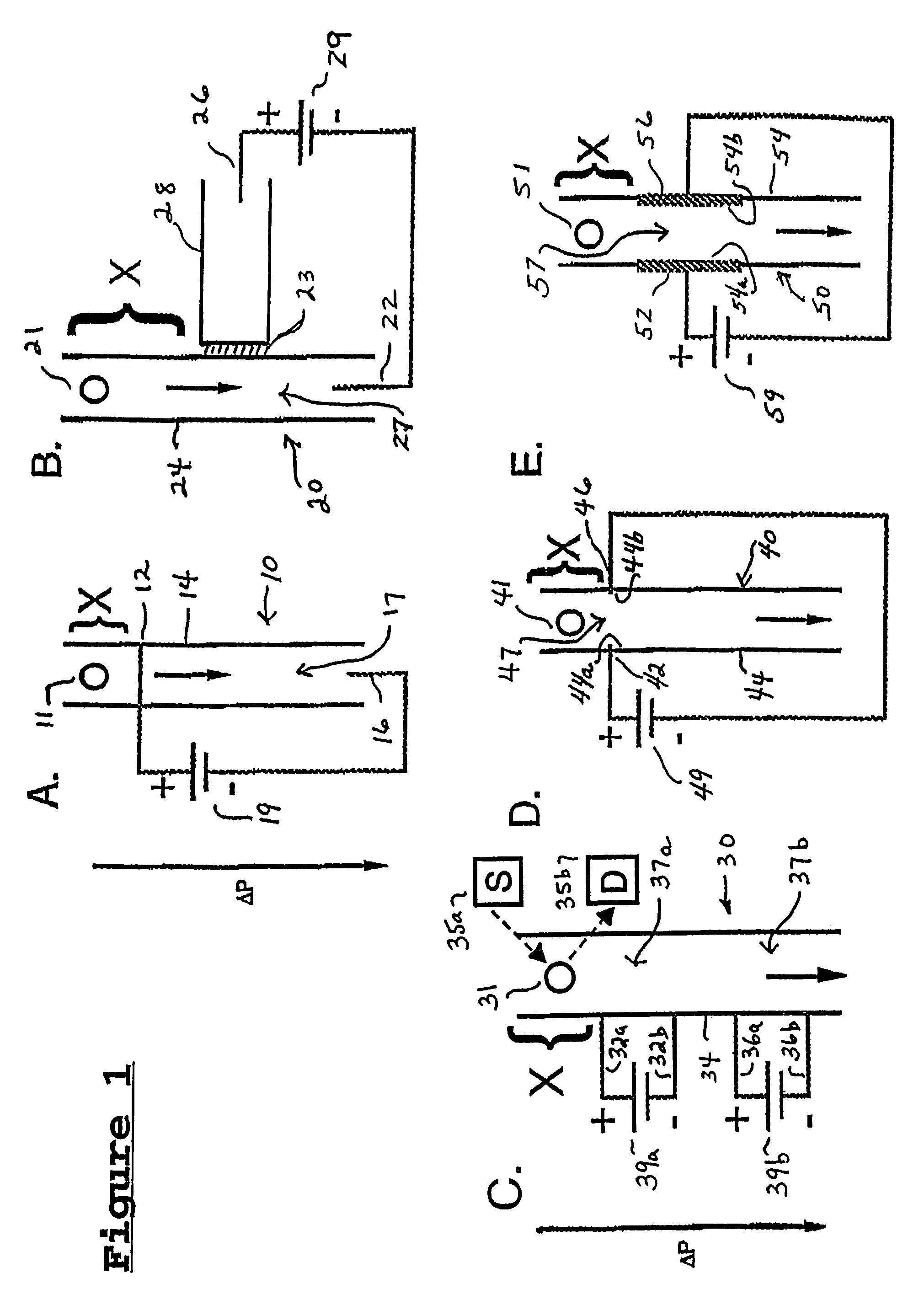Microfluidic systems and methods for transport and lysis of cells and analysis of cell lysate
a microfluidic system and cell technology, applied in the field of molecular biology, can solve the problems of insufficient lysis of erythrocytes, inability to quantify analytes in individual cells, slow lysis of individual cells, etc., and achieve the effect of considerable utility and high throughpu
- Summary
- Abstract
- Description
- Claims
- Application Information
AI Technical Summary
Benefits of technology
Problems solved by technology
Method used
Image
Examples
example i
[0057]A microchip design of the type shown in FIG. 2B has been tested using the immortal Jurkat T lymphocyte cell line. The cells were labeled with calcein AM (Catalog #C-1430; Molecular Probes, Eugene, Oreg.) and contained in PBS. The cross intersection 73 was visualized using a video rate CCD camera (30 frames / sec) and the cells were hydraulically transported to the cross intersection by applying sub-ambient pressure to the lower segment of microchannel 74. The cells appear elongated in the images in FIG. 7 because the fluorescence signal from the calcein in the cell is integrated over 33 msec for each video frame. The streak length increases after the cell enters the lower segment of microchannel 74 because the flow rate in this channel segment is equal to the sum of the flow rates in the upper and side channel segments leading to intersection 73. A pulsed electric field (square wave) was applied between the side channel segments 75a, 75b and the lower segment of microchannel 74....
example ii
[0061]FIG. 8 shows the separation of several fluorescently labeled components released from a single cell utilizing a microchip design of the type depicted in FIG. 5, above. These components are Oregon green and some Oregon green degradation products. To generate this data, living Jurkat cells were loaded with the membrane permeable dye Oregon green diacetate. The cells 161 metabolized the dye transforming it into a membrane impermeable form that was trapped in the cell. The cell 161 was then transported through microchannel 164 to the cross intersection 163, where it was lysed by the electric field applied through channels 165a and 165b. A portion of the lysed contents in analyte plug 171 was then transported by the electric field into side channel 165b and electrophoretically separated into multiple analyte segments 173a, 173b, and 173c and detected by fluorescence.
PUM
| Property | Measurement | Unit |
|---|---|---|
| electric field strength | aaaaa | aaaaa |
| axial length | aaaaa | aaaaa |
| axial length | aaaaa | aaaaa |
Abstract
Description
Claims
Application Information
 Login to View More
Login to View More - R&D
- Intellectual Property
- Life Sciences
- Materials
- Tech Scout
- Unparalleled Data Quality
- Higher Quality Content
- 60% Fewer Hallucinations
Browse by: Latest US Patents, China's latest patents, Technical Efficacy Thesaurus, Application Domain, Technology Topic, Popular Technical Reports.
© 2025 PatSnap. All rights reserved.Legal|Privacy policy|Modern Slavery Act Transparency Statement|Sitemap|About US| Contact US: help@patsnap.com



